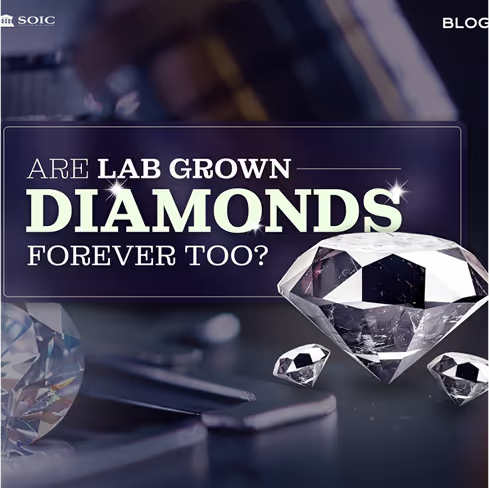
The gems and jewellery industry in India contributes 7% to the GDP and employs over five million workers. It represents about 15.71% of total merchandise exports, making it the third largest commodity. For the 2024-25 fiscal year (up to July 2024), exports are expected to reach US$ 8.58 billion, an 11.01% decline from 2023-24.
India exports a wide range of gems and jewelry, including cut diamonds, lab-grown diamonds, colored gemstones, and various types of jewelry made from gold, silver, and platinum. The Western Region is crucial to this industry, accounting for nearly 74.66% of total exports in 2022–23. Surat, a city in Gujarat, is home to over 450 jewelry manufacturers and exporters, establishing it as a global jewelry manufacturing hub.
India's top export destinations for LGDs are the US, Hong Kong, UAE, Israel, and Belgium. At the IIJS Premiere in August 2023, the GJEPC announced that it is looking to boost exports of Indian diamonds in markets such as Cambodia, Vietnam, and Sri Lanka. In March 2022, the Indian Government signed a Comprehensive Economic Partnership Agreement (CEPA) with the United Arab Emirates (UAE).
Let us begin by defining lab-grown diamonds and explaining why this will be the next big trend in India. Lab-grown diamonds (LGDs) are synthetic diamonds created in controlled environments using methods like High-Pressure High-Temperature (HPHT) or Chemical Vapor Deposition (CVD). These diamonds are chemically, physically, and optically identical to mined diamonds.
The LGD industry is regarded as a "sunrise industry," particularly significant for countries like India, which has a robust diamond industry supporting millions of livelihoods and generating substantial foreign exchange.
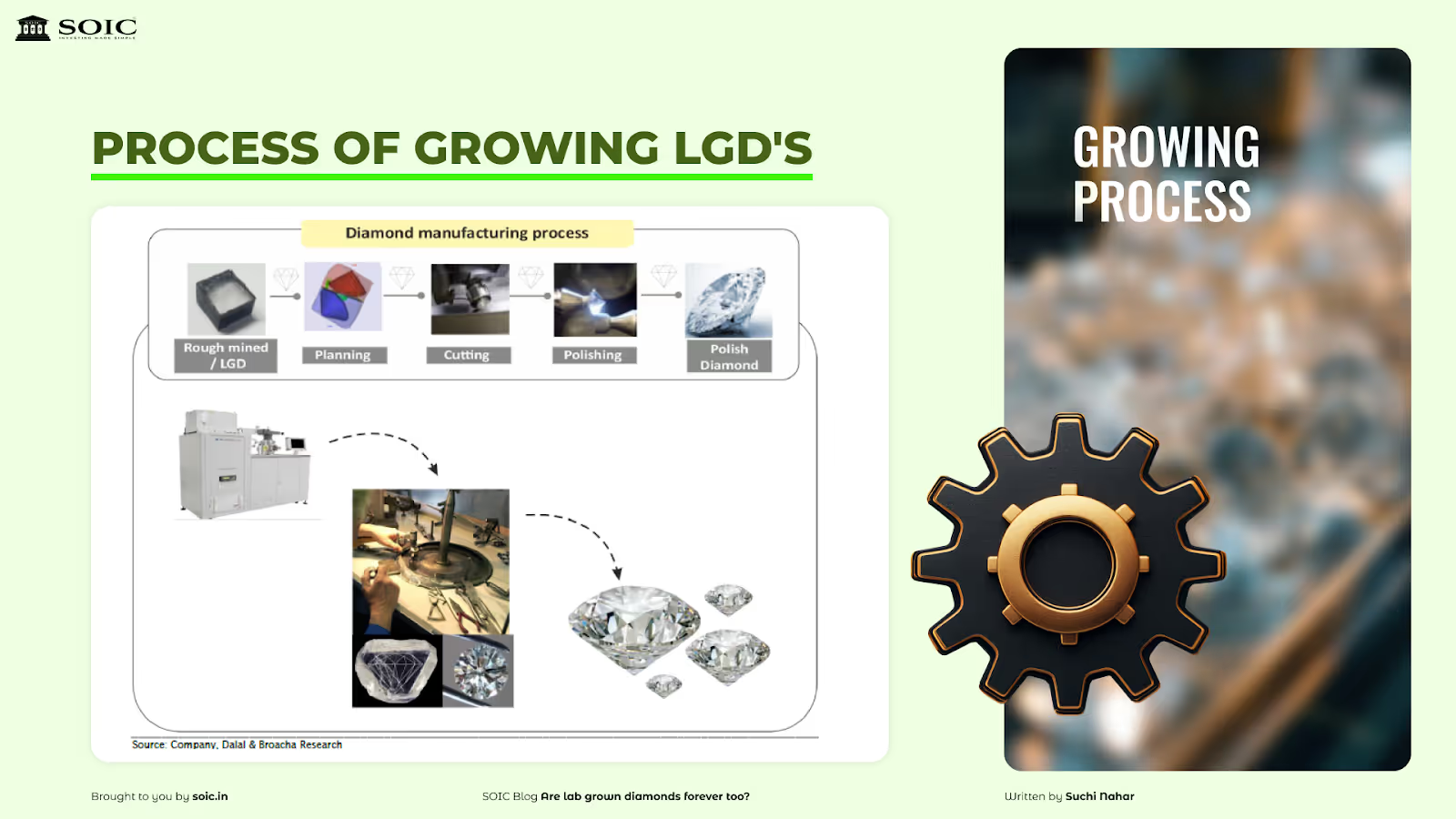
Once manufactured, the rough LGDs undergo processing to achieve the desired shape, size, and finish:
India's top lab-grown diamond manufacturers include Greenlab Diamonds, Limelight Lab Grown Diamonds, and Cupid Diamonds. Greenlab, one of the largest, operates over 1,000 reactors using CVD (Chemical Vapor Deposition) technology, while Real Illusion has about 80 reactors in Jaipur.
Currently, India has 2,200 to 2,800 lab-grown diamond machines, with projections to reach 5,000 in 2 years, according to the Lab Grown Diamond & Jewellery Promotion Council. About 90% of production uses the CVD method, although some manufacturers are exploring the High-Pressure, High-Temperature (HPHT) method.
Many essential components for CVD reactors, like microwave generators and diamond seeds, are imported. To reduce this import dependence, the government is offering research grants to develop domestic technology and components for diamond production.
Purpose: Ensure diamonds meet stringent quality and ethical standards.
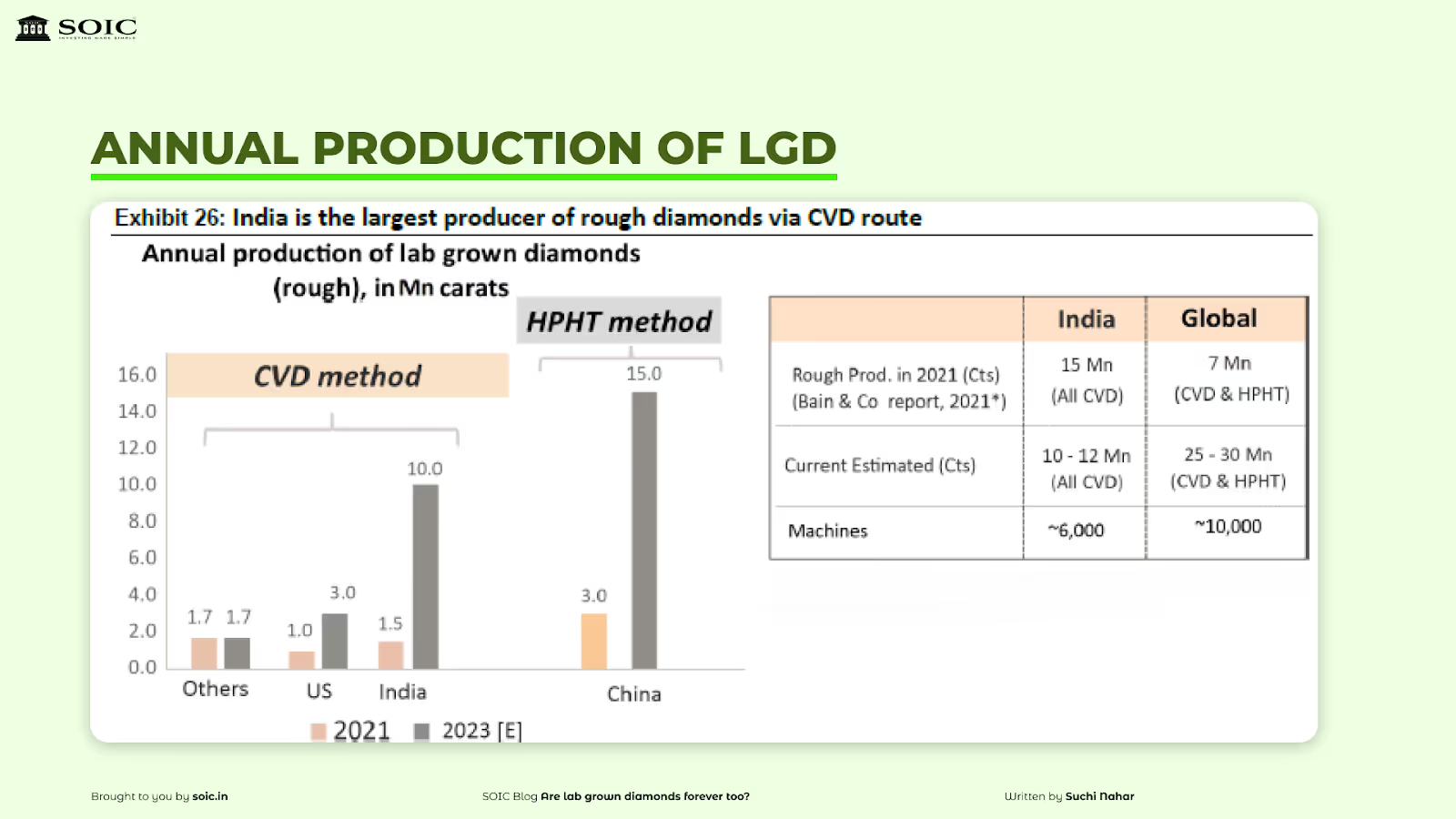
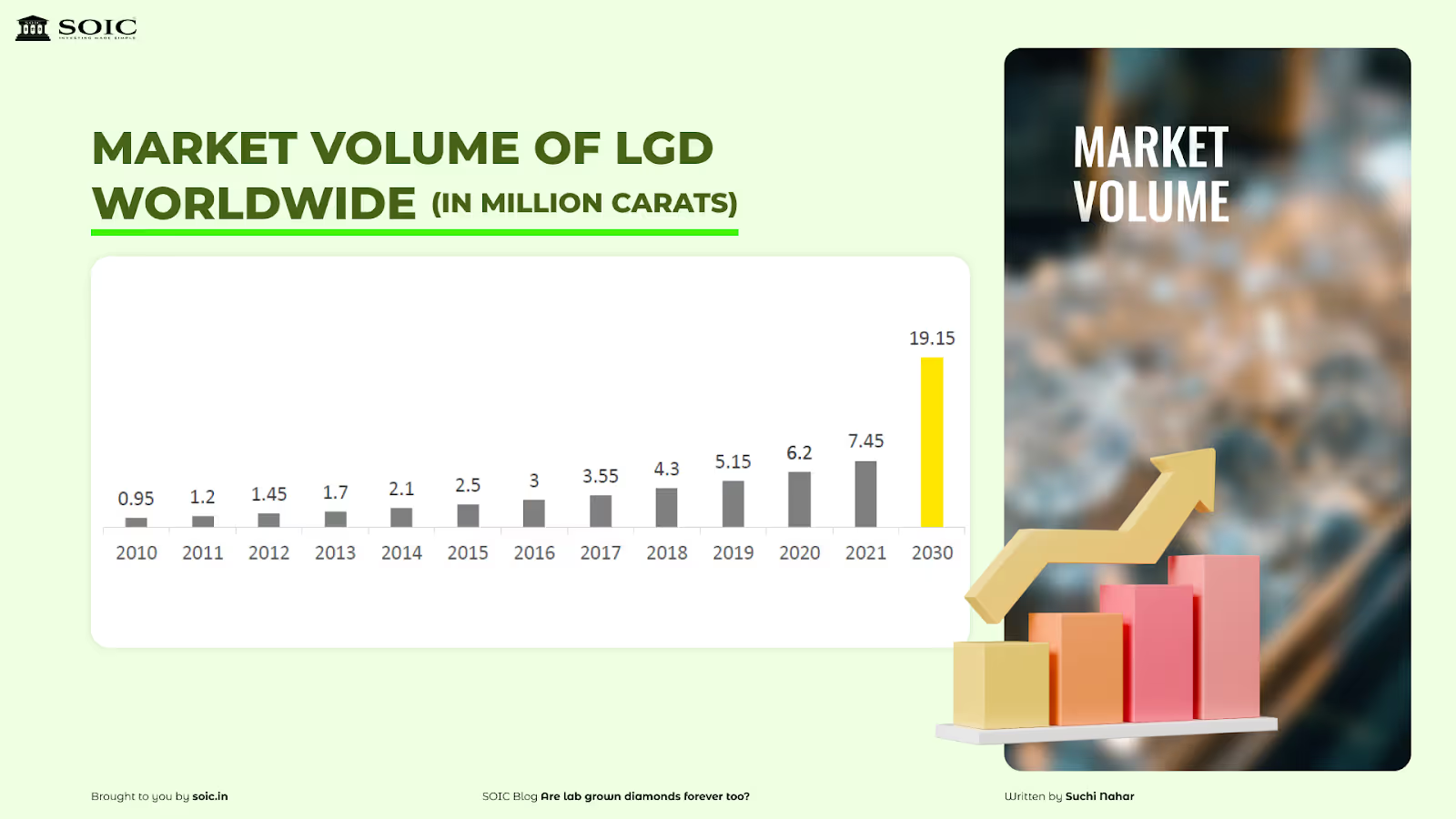
The top five nations in the world that will produce lab-grown diamonds in 2020 are China, India, the United States, Singapore, Europe, the Middle East, and Russia.
The size of the worldwide market for lab-grown diamonds was estimated at US $ 23,898.6 million in 2022 and is anticipated to grow at a compound annual growth rate (CAGR) of 8.64% during the forecast period, reaching US 39,301.2 million by 2028.
One of the world's biggest producers of lab-grown diamonds, Asia Pacific accounted for the majority of the market in 2021. This growth is owing to improvements in living standards and a rise in disposable income, thereby leading customers to adopt a lavish lifestyle, which is also driving the demand for jewellery in the region.
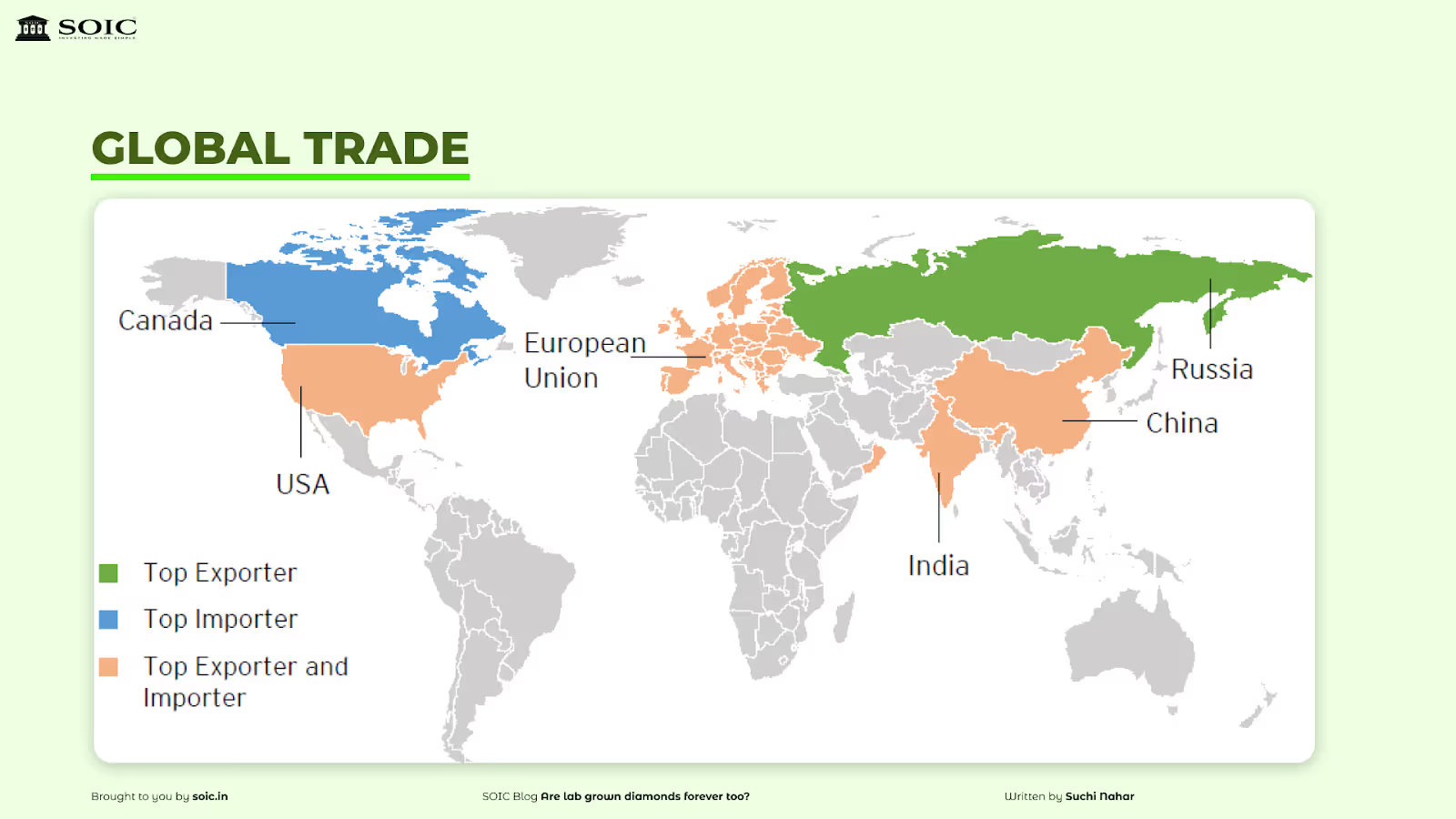
According to a commerce ministry report, India was making 15% of all lab-grown diamonds in the world as of May 2022. India is the world’s leading cutting and polishing center.
The India lab-grown diamond jewelry market was valued at US$264 million in 2022. Over the next ten years, lab-grown diamond jewelry sales will rise at 14.8% CAGR. The total market size is set to increase from US $ 299.9 million in 2023 to 1,192.3 million by 2033.
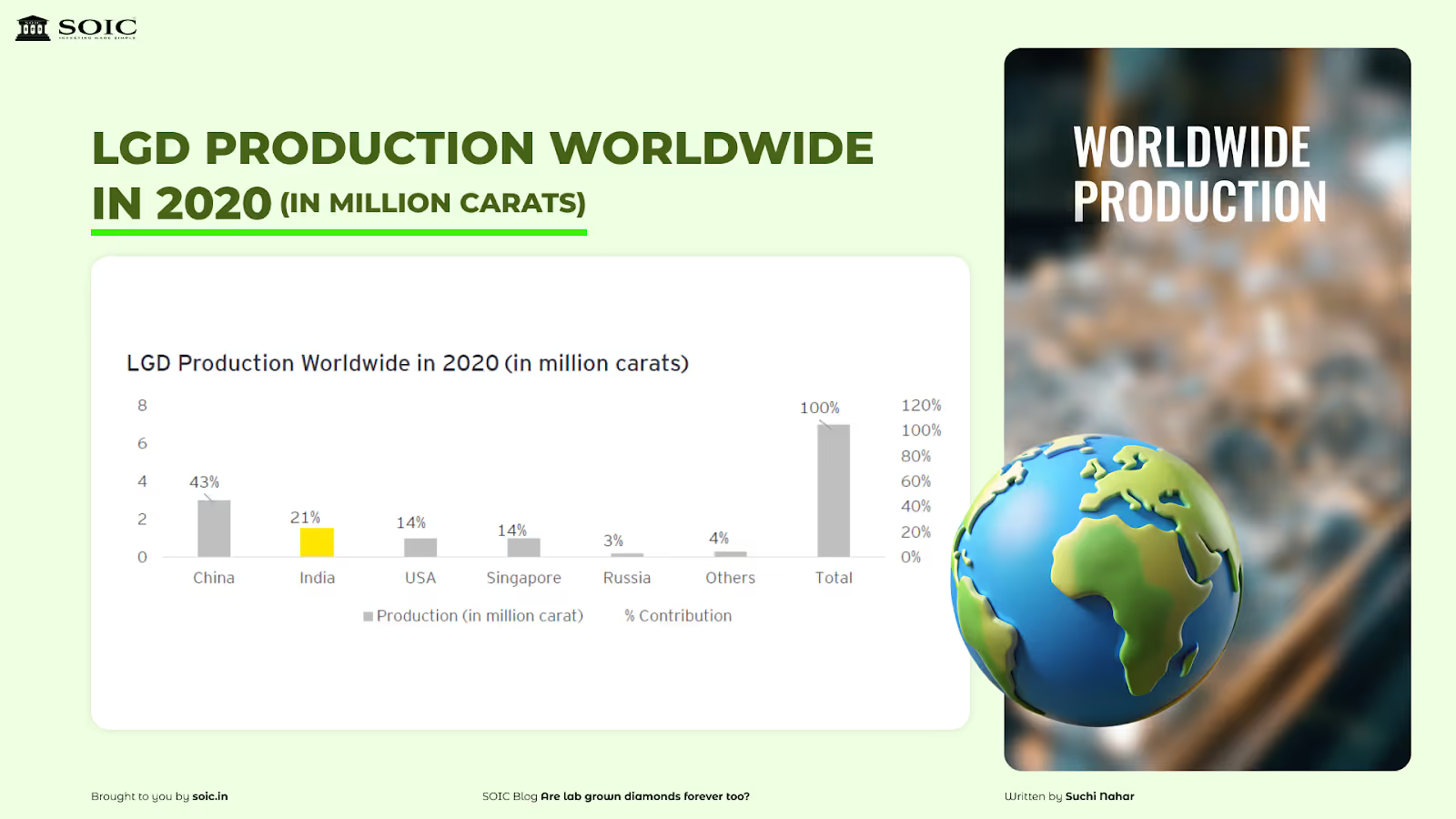
India was the second largest producer of lab-grown diamonds with 1.5 million carats in 2020 Surat and Mumbai are the major LGD hubs producing over 80-90% of the LGD.
India holds a prominent value share in the South Asia lab-grown diamond jewellery market due to the fast-moving lifestyle of the resident population. Lifestyle changes and growing spending on premium, high-cost ornamental products are spurring growth in the Indian market.
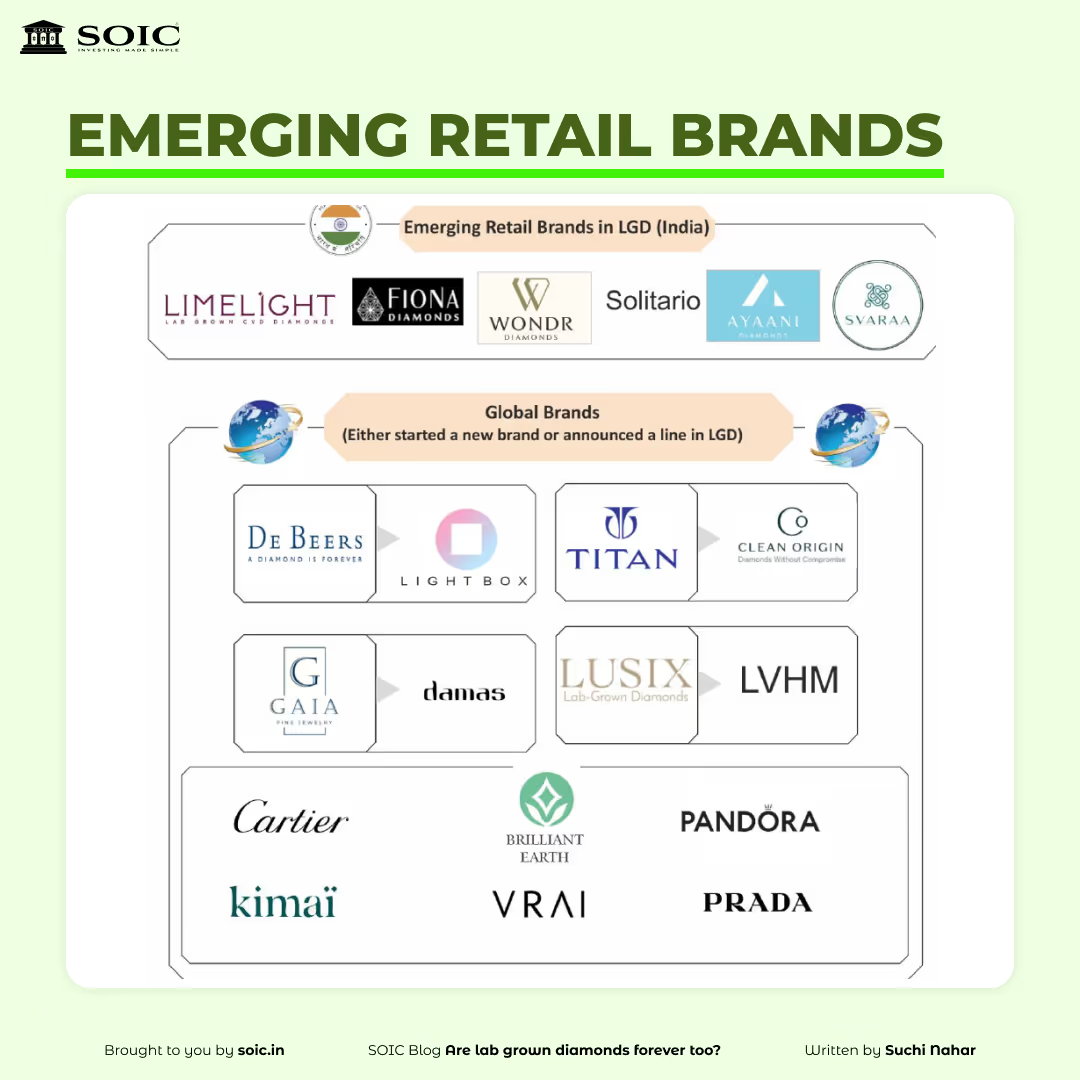
Every time technology changes, there is room for quick new competitors who are prepared to adjust and take advantage of market openings (Adapt, change, or face obsolescence). Nevertheless, none of the well-known conventional jewelry sellers have dabbled in lab-grown diamonds.
In India, well-known traditional jewelers follow buyback regulations for natural diamonds, which could be problematic if they were to launch a comparable product at a significantly lower price.
Their revenue may be greatly impacted if lab-grown diamonds are introduced, as this could potentially cannibalize their natural diamond business. India's lab-grown diamond market is still in its infancy; scalability is being tested, and significant awareness-raising is needed, in contrast to the United States, where lab-grown diamonds are already widely accepted.
While lab-grown diamond prices are initially linked to naturally mined counterparts, the markets are expected to diverge as they find ways to coexist and serve distinct segments. With sanctions on Russian diamonds, natural diamond prices are projected to rise, potentially benefiting the lab-grown diamond sector.
Although demand in the U.S. jewelry industry is slowing, the reopening of Chinese markets offers new opportunities for Indian lab-grown diamond manufacturers.
In the coming years, demand for diamonds will extend beyond jewelry into sectors like semiconductors, electronics, and defense, with lab-grown diamonds positioned as an alternative to silicon. As consumer awareness grows—especially among Millennials and Gen Z—there is a heightened focus on environmentally friendly products. Gen Z and millennials prefer brands that minimize carbon emissions, Lab-grown diamonds are already more sustainable and adapt well to fast-moving trends.Many manufacturers are working toward 100% renewable energy sources to eliminate carbon emissions entirely.
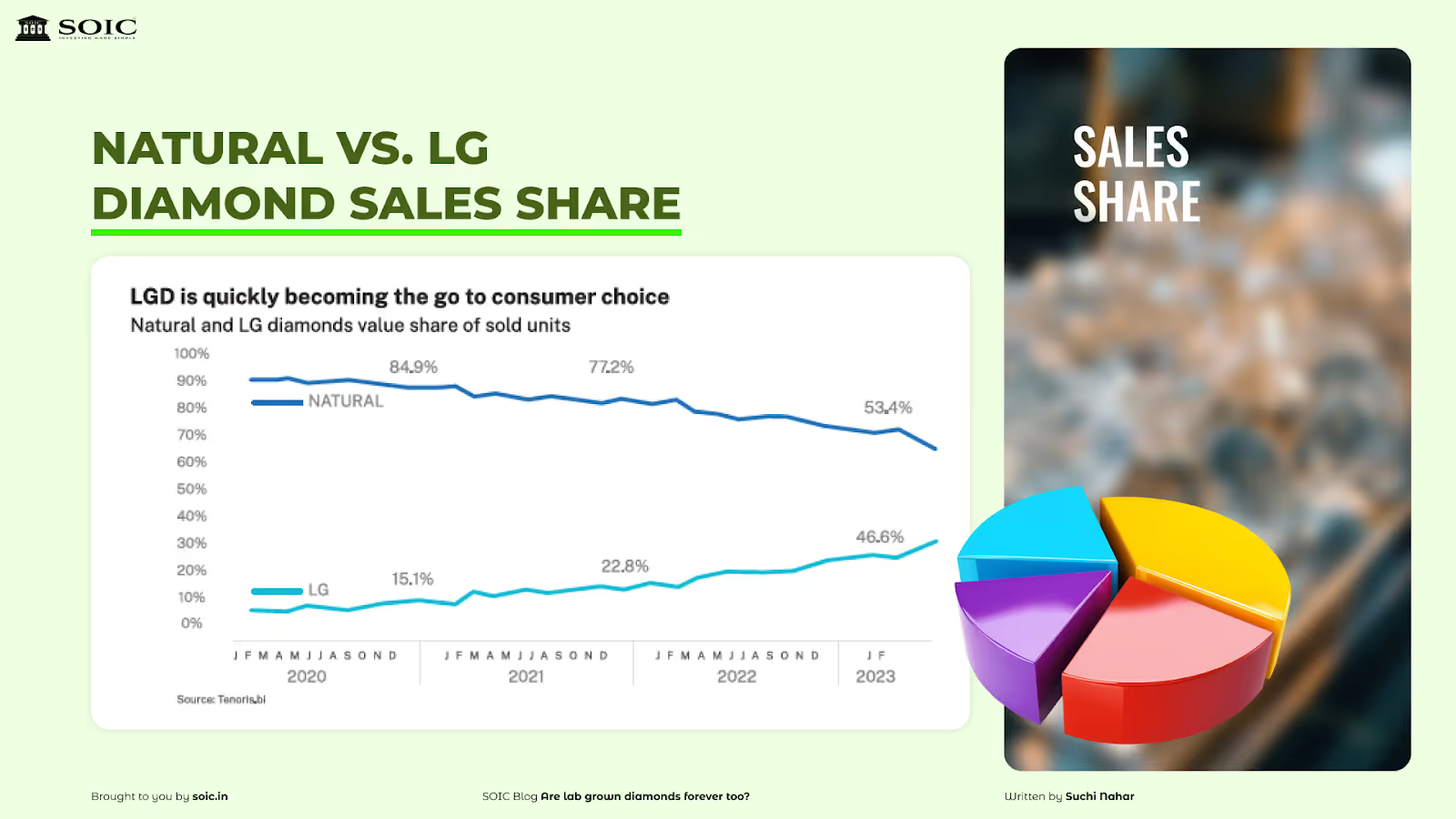
Lab-grown diamonds (LGDs) represent a perfect blend of technology and sustainability, marking a significant shift in the global diamond industry. With Gujarat leading as a global hub for cutting, polishing, and production, India's LGD ecosystem is set for rapid growth, supported by government initiatives and innovation.
The environmental benefits, cost efficiency, and ethical considerations of LGDs attract consumers worldwide, paving the way for a bright future. As the industry continues to flourish, LGDs are not just the diamonds of tomorrow—they are the gems that reflect today's evolving values and lifestyles.
We’d love to hear your thoughts! Share your views in the comment section below, and let’s chat about whether you think this could be the next big trend!
The information provided in this reference is for educational purposes only and should not be considered investment advice or a recommendation. As an educational organization, our objective is to provide general knowledge and understanding of investment concepts. We are SEBI-registered research analysts.
It is recommended that you conduct your own research and analysis before making any investment decisions. We believe that investment decisions should be based on personal conviction and not borrowed from external sources. Therefore, we do not assume any liability or responsibility for any investment decisions made based on the information provided in this reference.
0 Comments